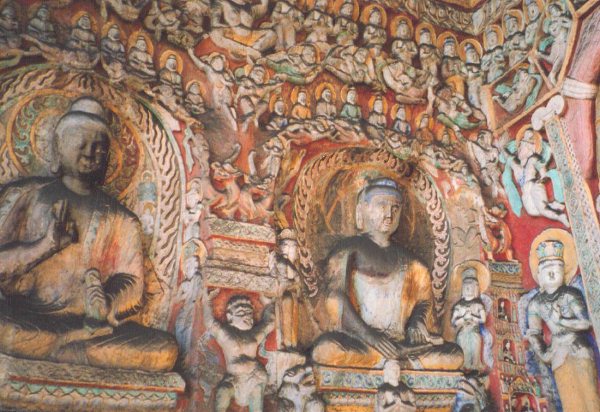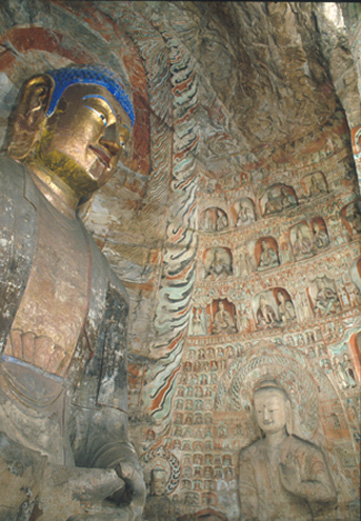
China - June 2002
Shanxi Provence
Yungang Caves
|
Yungang Caves are located about sixteen kilometers west of Datong, Shanxi Province. There exists 53 caves, most of which were made during the Northern Wei Dynasty between 460 and 494 AD. There are over 51, 000 stone sculptures extending one kilometer from east to west. |
The influence of Indian artists is more apparent here and some of the caves feature Hindu images. As well as carvings some caves are also decorated with frescoes and paintings depicting scenes from Buddhas life. |
|
|
|
|
|
|
|
|
|
 |
 |
|
|
|
|
|
|
|
|
|
|
Hanging Monastery (Xuankong Si)
|
|
|
|
The gravity defying Hanging Monastery is built on extremely sheer cliffs of Mt. Hengshan above Jinlong Canyon. Construction of the monastery dates back 1400 years to the Northern Wei Dynasty. Most of the architecture was reconstructed during the Ming and Qing dynasties. The 40 halls,towers and pavilions are supported with beams inserted into the cliffs. Bridges and corridors connect those pavilions and caves in which dozens of bronze, iron, stone and clay statues are enshrined. In San Jiao Dian (Three Religions Hall), Buddha, Confucius and Laotsu are enshrined together, which is a surprise. The whole structure seems to dangle by a thread at the edge of an abyss. |
|
Spikey was not scared by the structure. She enjoyed being the leader. |
Even though it has stood for 1400 years, I wasn't convince it would make it through our visit. |
 |
|
|
|
|